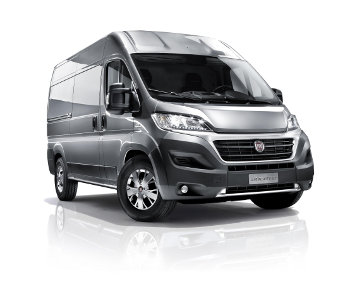
The revised 2014 Fiat Ducato
Fiat has released details of its new Ducato van, one day later than its PSA partners Citroën and Peugeot, who published details of their new Relay and Boxer models yesterday.
As with previous models, all three vans are essentially the same vehicle, but also as with previous models, Fiat has chosen to put its own spin on the Ducato, resulting in some distincitive differences that could make the difference for certain groups of buyers.
The biggest change — which affects all buyers of the Ducato — is that Fiat will continue to offer its own 2.3-litre Multi Jet diesel engines, rather than the Peugeot/Citroën 2.2HDi engine. The 2.3-litre engine will be available in 110hp, 130hp and 150hp versions, and the engine range is topped with a 180hp, 3.0-litre model. (Peugeot also offers a 3.0-litre option, so perhaps it’s using the Fiat 3.0-litre Multi Jet engine too?)
The second thing that makes the Ducato stand out, especially in the European motorhome market, where it dominates all other manufacturers, is that Fiat offers its ComfortMatic automated manual transmission as an option with all engines, except the entry-level 110hp 2.3l unit. As far as I can tell, neither Peugeot nor Citroën offers an auto gearbox option for the Relay/Boxer.
The final difference between the Ducato and the Boxer/Relay is that Fiat has beefed up the suspension a little more and the heaviest Ducato model has a maximum GVW of 4.25 tonnes — 200kg more than the 4.05 tonnes on offer from the Peugeot/Citroën ranges. According to Fiat, the new Ducato will boast the best Gross Vehicle Weight (up to 4.25 tonnes); best weight on the rear axle (up to 2.5 t) and best van payload (up to 2.1 t) of the ‘single wheel’ segment.
In truth, I suspect that both the auto gearbox option and the 4.25 tonne weight option are mostly aimed at specialist conversion markets, such as the motorhome, ambulance and minibus sectors, where the extra weight will be useful and automatic gearboxes are a much more popular choice. Most van operators will be reluctant to operate vans at 4.25 tonnes, unless they really need the extra weight over a 3.5t van, as it will mean that drivers are required to use a tachograph and work to much more stringent and complex working hours regulations.
